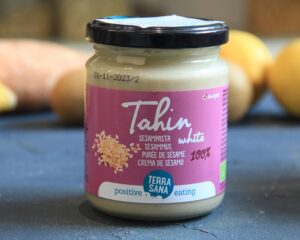Organic ceremonial Matcha tea from Japan
From 6.80€
Japanese ceremonial Matcha is a bright green tea powder that has been an integral part of Japanese culture for centuries. Its origins date back to the 12th century. century, where Zen Buddhist monks first introduced the art of growing and preparing matcha. Over time, the elaborate tea ceremony has become a profound symbol of harmony, respect and thoughtfulness in Japanese tradition.
Japanese ceremonial matcha is made exclusively from shade-grown tea leaves. The tea plants are carefully cultivated, shielded from direct sunlight for several weeks before harvesting to increase chlorophyll production and produce a richer green colour. After harvesting, the leaves are carefully steamed, dried and ground to form a fine, velvety powder called matcha.
Health benefits of Japanese ceremonial Matcha
Antioxidants. Matcha is renowned for its high concentration of antioxidants, especially catechins such as EGCG (epigallocatechin gallate). These powerful antioxidants fight oxidative stress, protect cells from damage and support overall health.
Concentration and calm. Matcha contains the unique amino acid L-theanine, which promotes a relaxed state of alertness. It provides a balanced, long-lasting energy boost without the jitters often associated with coffee.
Stimulating metabolism. The combination of caffeine and catechins in matcha can support a healthy metabolism and help control weight.
Detoxification. Chlorophyll helps cleanse the body of toxins and supports healthy liver function.
Immune system. Matcha is rich in nutrients including vitamins (A, C, E), minerals (potassium, iron) and amino acids, which strengthen the immune system and increase resistance to infections.
Oral health. Matcha’s natural antibacterial properties can help fight oral bacteria, promoting healthier teeth and gums.
Side effects
Although matcha is generally safe to consume, it contains caffeine, which can cause sensitivity in some individuals. When used in moderation, matcha is well tolerated, but excessive consumption can cause insomnia, irritability or indigestion. Pregnant or breastfeeding women and those who are sensitive to caffeine should use caution when taking matcha.
Use and preparation of Ceremonial Matcha
Japanese ceremonial matcha is traditionally prepared using a bamboo beater and bowl in honour of the traditional tea ceremony.
Preparation: Sift 1-2 teaspoons of matcha into a bowl, add 100 ml of hot (about 80 °C) water and whisk in a zigzag motion until an emerald-coloured foam forms. You can then add more water if you want the matcha to be less strong. You can add plant milk to taste and sweeten it.
For best results, the foamer should be soaked in hot water before use.
Matcha is becoming increasingly popular as a culinary ingredient. It is used in cocktails, lattes, desserts and savoury dishes, where it can stand out with its unique flavour and bright colour.
Japanese ceremonial matcha is a symbol of ancient wisdom and modern prosperity. In addition to its cultural significance, this emerald elixir offers great health benefits and pleasant sensations. Whether you are participating in a traditional tea ceremony or using Matcha in a culinary discovery, incorporating this vibrant green powder into your daily life promises a remarkable sensory journey for body, mind and spirit.
Taste good!
Sources:
https://matcha.com
https://ujido.com
NOTE. The information provided here should not be interpreted as advice for treatment or other health problems. We encourage you to make decisions about your personal health by considering different sources of information.
Organic Matcha Green Tea 100%
Energy value 1320 kJ/ 315 kcal
Fat 2,5 g
- of which saturates 1,4 g
Carbohydrates 33 g
- of which sugars 6,7 g
Fibre 35 g
Protein 23 g
Salt 0 g
Store in a cool, dry place.












